The Dojo vs. the Street
By Paul 'Batman' O'Brien
B.A., N.C.E.H.S., Dip. Acu., Adv. Dip. OBB, Cert Clin. Med. Pn1, PN-SSR, PN-NCA, M.AFPA, M.ETCMA, M.C.Th.A.
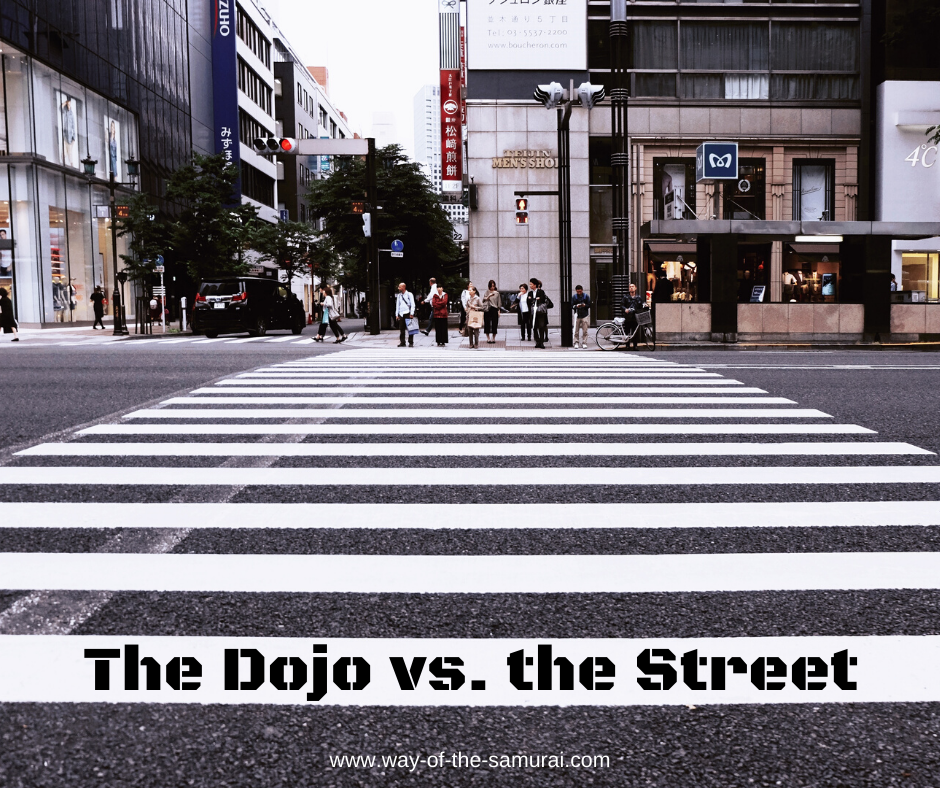
The Dojo vs the Street...a question debated back and forth by martial arts students since the dawn of, well internet chatroom's mostly. Today, I submit my take on this practical question as both traditional martial artist and modern combat instructor.
Most martial arts classes take place in school hall or scouts den. Some take place in gym studios and the really great clubs have authentic Japanese Dojo’s with real tatami mats! This is the first problem with traditional martial arts. The dojo may look pretty and be cool to train in, but it does you a disservice. In training in such an environment the student is conditioned to defend oneself in a fantasy world. Your local pub and back alley bear very little resemblance to the organised and peaceful dojo.
Ask yourself, if you are going to be attacked where is it more likely to be and what is it going to be like? Will it be a well lit padded floor dojo? Or will it be a gritty pavement or floor covered in broken glass, gravel, beer (or worse) in dull light? I think most would agree that it is going to be the later. And yet martial artists, that group of people who dedicate themselves to studying combat, train on polished floors destined never to trip on debris.
Clean Debris
One of the first things I was introduced to was “Clean Debris”. Clean debris is sterile trash strewn across the training floor. You will slip stumble and fall over it. Just like the street. Hell, during several training sessions and simulations they had me practising in actual trash ridden alleyways! You can’t get more realistic than that! Why is this important? Well, in one particular exercise my instructor had two “thugs” kicking me in the head and body. I had to defend myself and escape. Now I had practised this technique before in the dojo and was confident I could do so here.
The beating began and I quickly realised I was in trouble. The gravel dug into my back, but worse dust and street filth were being kicked into my face. I couldn’t see, I had a hard time breathing, and then I was fighting for my life. I was flooded with fear and panic as these guys randomly attacked me all over.
But the new techniques I was learning kicked in I got to my feet and ran. “Stop!” My teachers voice rings out. Simulation over. The adrenaline faded, I was shaking a little and he smiled and asked “and that was Shotokan Lesson 42 right?” I had never felt like that while studying traditional Martial arts, but it was exactly how I felt when I was attacked. And that was the point. Train in the environment you will be defending yourself in. That way you condition yourself to respond appropriately in that environment.
The Opponent
Who do you fight in traditional Martial Arts? Often you are simply told you opponent is in front of you, or to the side, or to the rear. Again this undermines the student and fails to prepare him for actual conflict, and this can have serious repercussions. As one of my sergeants would often say “they just tell you you’re fighting the opponent. They don’t tell you if your opponent is bigger than you, drunk, high, a minor or a woman. So how do you learn to respond with an appropriate level of force?”
Very few schools will teach the “Use of Force Ladder”, because it is a training innovation of one of my teachers, Jim Wagner, the founder of the Reality Based Martial Arts movement. The ladder represents what is and is not appropriate in a conflict situation. Granted your martial arts techniques may save you, but at what legal cost?
In traditional martial arts I was taught over and over again, “your opponent comes in with an attack, block and counter” The acceptable counter was nearly always a full force punch to the face. As such I was conditioned to hit my opponent regardless of the situation or the individual with a full force attack. However if I responded with this, as I had been trained, in a real life confrontation against an opponent who was drunk, I would be arrested and prosecuted for assault, despite the fact the opponent had attacked me first.
In addition to the Use of Force Ladder, Jim also showed me a variety of different levels of responses. Not only did this variety keep me interested, it afforded me a greater scope of options and legally justifiable actions. I was never taught this in traditional martial arts, mainly because it is not part of the curriculum. Some of my better instructors would give words of caution, but no tangible knowledge on self-defence for the courtroom, should you ever be in the unfortunate situation of needing to legally justify yourself.
Conflict Rehearsal –Training for Real Life
The essential teaching method of realistic training to confront and defence yourself from conflict and violence is through Conflict rehearsal. For instance when I trained with Jim he would show us a situation, perhaps an inmate stabbing, or mugging, an armed robbery or even a terrorist attack. These would be launched upon us without prior warning. That allowed us to act honestly and naturally and to gauge our abilities and see the short comings of many of our techniques. Believe me when I tell there are many shortcomings.
How many times in your martial arts class has someone burst in to your training hall brandishing a semi automatic pistol, and proceeding to rob the establishment? None? Well that happened in a training hall I was in. Luckily it was a simulated incident, part of Jim Wagner’s reality based personal protection instructor’s course. The gunman was of course a trainee instructor, there to learn the martial arts and playing the role of a thief, brandishing a soft air replica gun. Didn't know that at the time though.
Likewise when I trained under former Navy SEAL intelligence officer Tim Larkin, I was in a simulated attacked by two men while trying to make my way up a fire escape. That one was resolved when I picked up a paint can and simulated beating one of the men's head in with it....I got props for originality on that one.
Often my favourite techniques, ones I had practised countless times and that were near instinct would get me killed. For example I was talking to some friends on the course when I student approached me and asked for some change for the vending machine. “Sure” I said reaching in to my pocket – then I was rushed and stabbed in the kidney’s several times before the student ran away with my wallet! It was a rubber knife of course, another simulation, but I still, despite having years of traditional training, fell apart and failed to put up any real resistance at all.
The class had been observing this of course and the instructor now showed us the proper manner for dealing with such scenarios. His instruction ranged from preventative measures dissolving the situation before it’s occurrence to worse case survival. I was put in a similar situation later on, again unexpected, and am pleased to say I didn’t get stabbed.
Throughout all this training I was taught the things vital for self-defence that traditional martial arts fail to recognise as being necessary. Principals such as the O.O.D.A. Process, Conflict awareness, tunnel vision, weapon fixation, and more and these are now crucial tools I bring in to both my traditional and modern classes.
For example in the run up to the Irish Team competing in the European Iadio Championships, something as far away from real life street encounters as could be imagined, I ran the team through several adrenaline dumping drills, distraction drills, clean debris environments etc in order to condition them to performing under pressure - far less pressure than competition.
The Dojo vs the Street
The Dojo vs. the Street...they aren't the same. There is difference in training for a "way" and for "combat" and another difference again for "realistic street self defence".
The "dojo" itself is based Buddhist and Taoist ideas, and deliberately is not like our outdoors world or reality. Our practice in the dojo begins and ends with Shintō rituals - most notably the Rei (bow). In the Musō Jikiden Eishin-ryū and even within modern Seitei Iai we begin with a bow to the front. In a traditional dojo the call is Kamiza ni Rei. This is a command to bow to the Kamiza or Kamidana. The Kamiza means "upper seat". The Kamidana is a small wooden shrine, (how big and how small depends on the dojo) often found in households through Japan that acts as a substitute for a large Shintō shrine on a daily basis. It is a sacred space, creating a separation from the "ordinary" world much like the dojo itself.
The kami (spirit) being present in the dojo then dictates many other aspects of the rituals before and after practice. For instance we step into the dojo with the left foot, as it means we cannot draw against the kami or our fellow students.
In the dojo, we change out of our clothes and put on special garments for training. Then we step into the dojo and we step in conscious that we are leaving behind the world outside for a time. Before we begin our practice we move through a series of rituals that draws our attention to our practice and away from the other concerns. We clear our mind, find focus and prepare for practice. To practice a way.
Every aspect of this is to separate you from reality, from the street. Because the inherent purpose of the practice, while incredibly realistic and practical in many respects is not for that, at that time. In the dojo you practice the way. You work on the way and on yourself.
The practical application...that happens on the street. And even the classical styles acknowledge this.
A large amount of traditional feudal martial arts and even more modern traditional martial arts and gendai Budo such as Karate, train outside. These are traditions still maintained. There is inside dojo practice...and outside combat practice. Karate-ka often attend outdoor Gasshuku to take their polished technique and test them on even ground, in the cold, in warmth, in the rain, in the snow. It is a very different thing trying to throw a roundhouse kick in jeans and boots while on uneven snowy terrain.
It's a beautiful thing to train in kenjutsu or any koryu art outside, barefoot on the grass and earth. There is a different energy, a different focus as you balance on the uneven ground, deal with the sun in your eyes and a less than ideal environment.
But the masters of old knew that if you wanted to make your martial arts real world applicable you had to take it out of the dojo and into the real world.
What this means is that you have to adjust certain aspects of your training if you want it to work for real. Spend time training in your street clothes. Don't hand back a weapon to you training partner (why - read this). Don't do rounds on a heavy bag.
Realistic combat training is not done for the purpose of fitness. We're not doing a bag workout for the purpose of a workout. What you're learning to do is conditioning yourself to striking a human being and to doing it properly.
Now most physical confrontation, most fights, last between 5 to 15 seconds. That's it and then it is over because hopefully someone is sufficiently injured that they stop. That means that when you approach the heavy bag or dummy, that's your time, 5 to 15 seconds.
Every time I approach my training dummy, I'm not seeing him as a dummy. I've put him in some clothing because I want to see him as a human being. I want to see him as a human being that is aggressive to me and that immediately causes me to adopt my conflict stance. This is point I begin striking practice from.
I'm in and I'm out in 5 to 15 seconds. And every time I come up to Bob this is the mindset that I have. This is the mindset I want you to cultivate. That is how I want you to train. I want you to imagine that this is a real person, it has real intent, it is really coming to hurt you, and you have to respond accordingly. I want you to train like it's a real encounter...because it is a street - not a dojo. No reiho, no etiquette - just combat.
In the next article I'll introduce to some lifesaving footwork for a knife attack defence...but if you don’t want to wait, and you appreciate that this is important information you can get my complete knife attack defence course for just $97 right now.
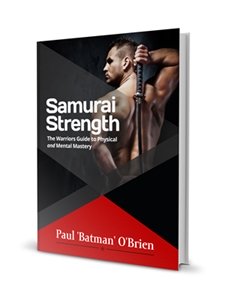
Samurai Strength Vol. 4 - Knife Combat & Defence
Samurai Strength Vol. 4 - Knife Combat & Defence, is perhaps one of the most important manuals I've written.
Based on my training under Special Forces, Police and Military Instructors like Jim Wagner and Tim Larkin, and as a qualified Knife Survival instructor, this manual teaches; proven life saving techniques to defend against an attacker with a knife.
Teaching the same disarm and defensive techniques used by the current US military and Special Forces units, along with the detailed instruction on weapon deployment, the Use of Force, the legal system, hostage and terrorist situations and the only attacks, blocks, counters and drills you'll ever need.
Bonus material from US Navy Seal techniques, along with some historical samurai methods of knife combat.
Supported by 2 Info-graphics, 75 mins HD Streaming Video Instruction and a 1 hour 6 min Q&A HD Video.
You've been reading about the dojo vs the street. Want more great tips on how to realistically train? Check our Knife Fighting 101
Click here to return to the Way of the Samurai Home Page.
Free Samurai E-books

Get Free Exclusive Samurai Guides and E-books

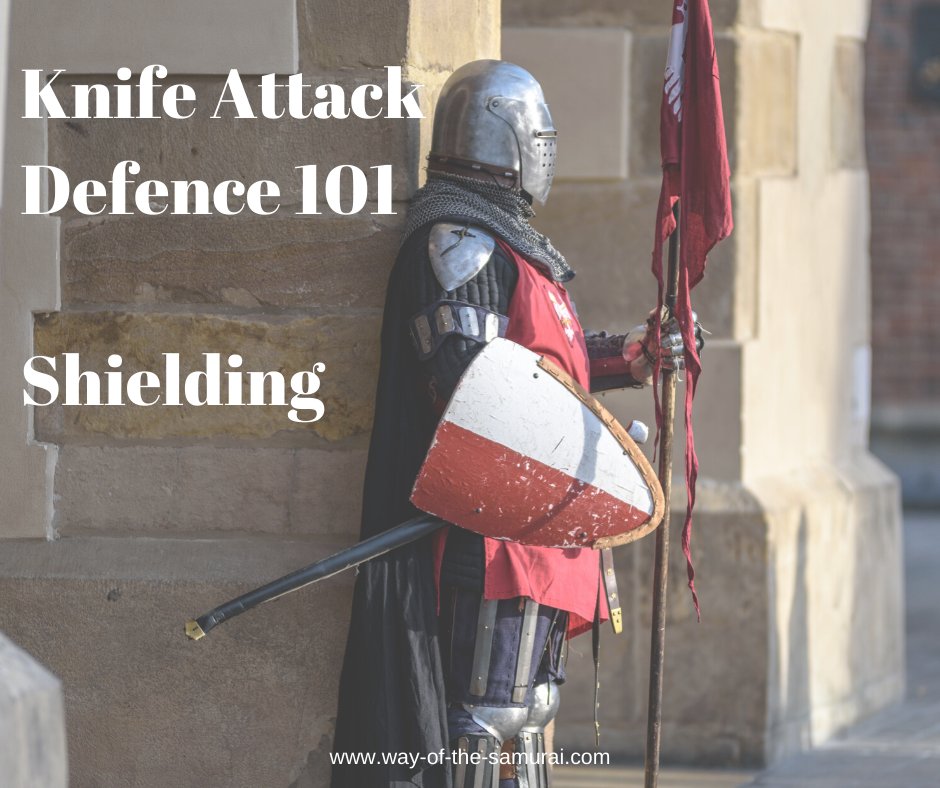
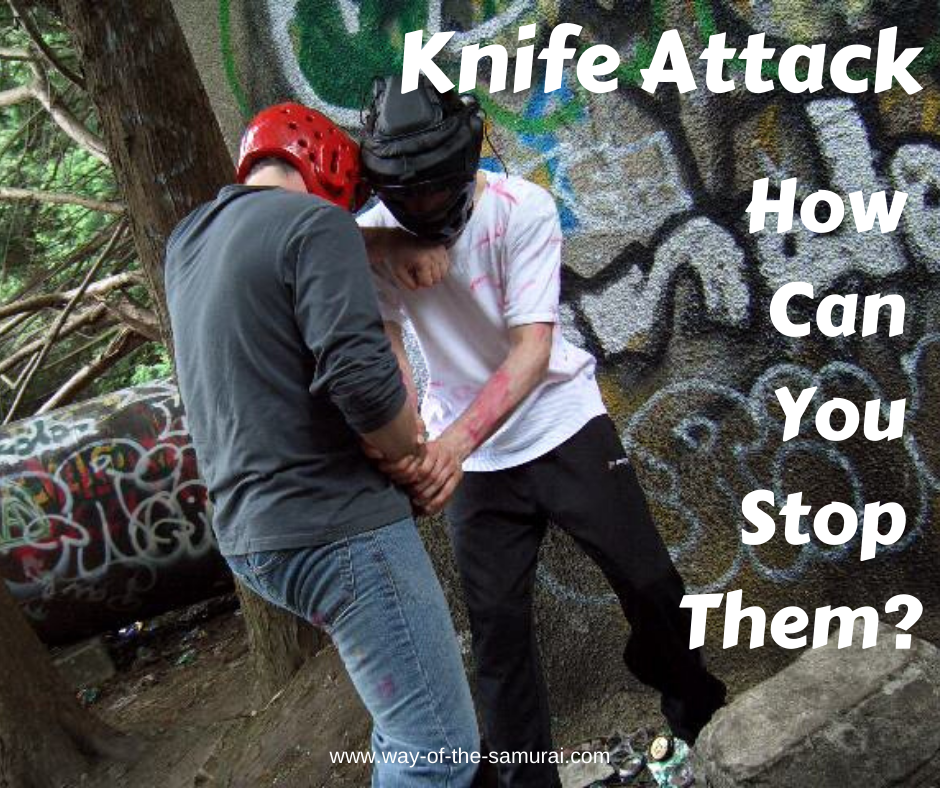
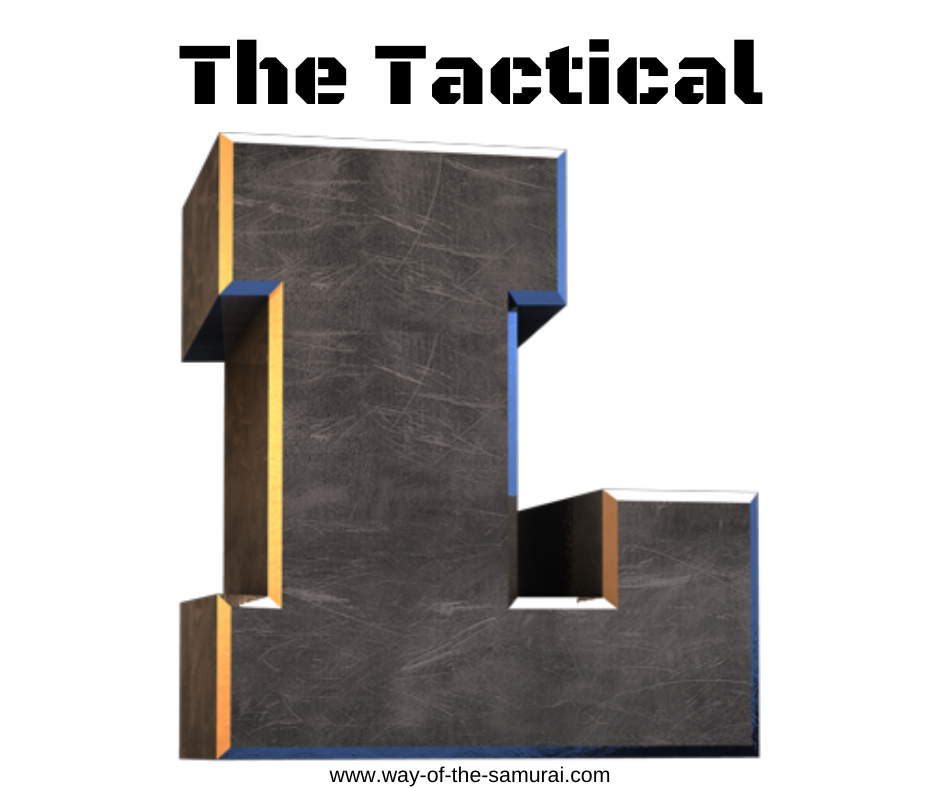




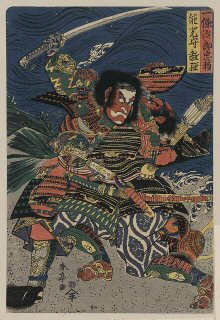
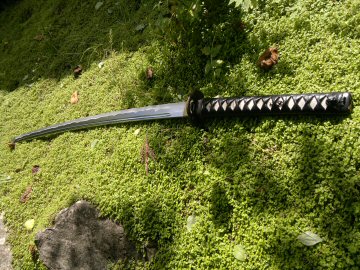
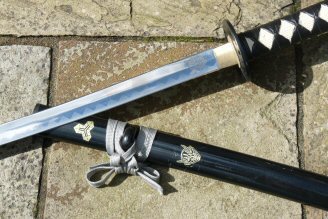
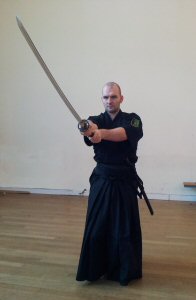
New! Comments
Have your say about what you just read! Leave me a comment in the box below.